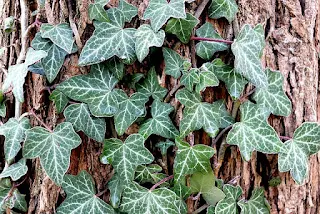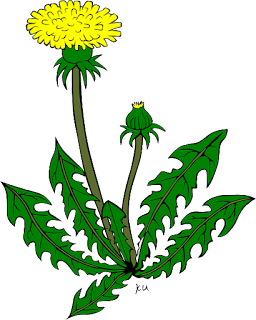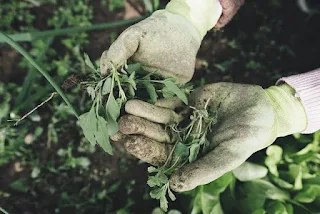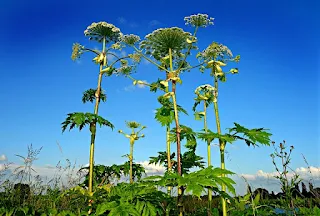Weeds and Biodiversity: Embracing a Diverse Ecosystem
Weeds are often viewed as undesirable plants that ruin the aesthetic of a uniform, green lawn. However, they can play an essential role in promoting biodiversity within your garden. Many weeds attract pollinators like bees and butterflies, which are crucial for maintaining a healthy ecosystem and supporting food production. Additionally, some weeds provide habitat and food for birds and other wildlife. By allowing a variety of plants, including weeds, to grow in your yard, you can contribute to a more diverse and robust ecosystem.
Here are some examples of weeds that benefit pollinators, provide habitat, and contribute to biodiversity:
- White Clover (Trifolium repens): This low-growing plant attracts bees, butterflies, and other pollinators with its small white flowers. As a legume, it also fixes nitrogen in the soil, improving fertility.
- Goldenrod (Solidago spp.): Goldenrod's bright yellow flowers are a magnet for bees, butterflies, and other pollinators. Additionally, some species of birds, such as goldfinches, feed on goldenrod seeds.
- Milkweed (Asclepias spp.): Milkweed is the primary food source for monarch butterfly caterpillars. Its fragrant flowers also attract bees and other pollinators, while the plant provides shelter for small animals and insects.
- Queen Anne's Lace (Daucus carota): This wild carrot relative produces large, flat-topped clusters of tiny white flowers that attract a wide variety of pollinators, including bees, wasps, and butterflies. Its dense foliage provides cover for small animals and insects.
- Thistle (Cirsium spp. and Carduus spp.): Although thistles can be prickly and challenging to handle, their vibrant flowers attract bees, butterflies, and other pollinators. The seeds are a favorite food source for goldfinches and other birds.
- Joe-Pye Weed (Eutrochium spp.): This tall perennial, with its clusters of pink to purple flowers, is highly attractive to butterflies and other pollinators. The flowers also provide a valuable late-season nectar source when other blooms have faded.
- Vetch (Vicia spp.): Another nitrogen-fixing legume, vetch produces clusters of small, pea-like flowers that attract bees and other pollinators. Its sprawling growth habit provides cover for small animals and insects
- Dandelion: While often considered a nuisance, dandelions have deep taproots that help aerate the soil and bring up nutrients from deeper layers. Their flowers also attract pollinators. Dandelions also have many uses!
- Plantain: This hardy weed has medicinal properties, such as helping to soothe insect bites and burns. Its presence indicates compacted soil, and its deep roots help break it up, improving soil structure.
- Yarrow: Yarrow is a drought-tolerant plant that attracts beneficial insects like ladybugs and hoverflies. It can also be used medicinally to treat cuts and wounds.
- Chickweed: A common garden weed, chickweed is edible and rich in vitamins and minerals. It can be added to salads or cooked like spinach. Chickweed also provides habitat for beneficial insects.
- Purslane: This succulent weed is an excellent source of omega-3 fatty acids and is rich in vitamins and minerals. It can be eaten raw or cooked and adds a unique texture to salads.
Noxious Weeds: Managing Invasive Species
 |
| English Ivy |
Here are some examples of invasive weeds found in the US, along with suggestions for non-invasive native alternatives:
- Kudzu (Pueraria montana): This fast-growing vine is known for smothering native plants and trees, leading to a decrease in biodiversity. To control kudzu, it's crucial to remove the entire root system to prevent regrowth. Consider planting native vines like coral honeysuckle (Lonicera sempervirens) or American wisteria (Wisteria frutescens) as alternatives.
- Japanese Knotweed (Fallopia japonica): This aggressive, bamboo-like plant can grow through concrete and cause structural damage. It also outcompetes native vegetation, reducing biodiversity. Remove Japanese knotweed through manual digging, ensuring that all rhizomes are removed to prevent regrowth. Replace it with native shrubs like buttonbush (Cephalanthus occidentalis) or winterberry (Ilex verticillata).
- Purple Loosestrife (Lythrum salicaria): This attractive, tall perennial with spikes of purple flowers can quickly invade wetlands, displacing native plants and reducing habitat for wildlife. Remove purple loosestrife plants by hand-pulling, and replace them with native wetland plants such as swamp milkweed (Asclepias incarnata) or blue vervain (Verbena hastata).
- Garlic Mustard (Alliaria petiolata): This biennial plant can spread rapidly in forest understories, displacing native wildflowers and reducing habitat for native insects. Hand-pull garlic mustard plants, ensuring to remove the entire root system. Replace it with native woodland wildflowers like wild geranium (Geranium maculatum) or trillium (Trillium spp.).
- English Ivy (Hedera helix): This evergreen vine can climb and smother native trees, leading to their decline or death. It also forms dense ground cover, preventing the growth of native plants. Remove English ivy by cutting and pulling vines, and replace it with native ground covers like creeping phlox (Phlox stolonifera) or wild ginger (Asarum canadense).
Redefining Beauty: Challenging the Perfect Lawn Stereotype
A
perfectly manicured, monoculture lawn has long been the gold standard in
lawn care. However, it's time to redefine what a beautiful lawn looks
like. A natural, diverse lawn not only supports biodiversity but also
creates a unique, visually appealing landscape. Embrace the natural
beauty of a lawn that includes a mix of grasses, wildflowers, and
non-invasive weeds, and enjoy the benefits it brings to the environment
and your outdoor space.
Sustainable Lawn Care: Tips for Managing Invasive and Noxious Weeds Naturally
Maintaining a beautiful and eco-friendly lawn involves addressing invasive noxious weeds that can disrupt local ecosystems and outcompete native plants. Here are some tips for managing these weeds in a natural and sustainable way:
Identification: Accurately identify invasive and noxious weeds in your lawn. Familiarize yourself with common invasive species in your area by consulting local gardening clubs, extension services, or online resources. Early identification and action can prevent weeds from spreading and causing more significant problems.
- Hand pulling: One of the simplest and most effective ways to manage invasive weeds is by hand-pulling. Remove the entire root system to prevent regrowth. Hand-pulling works best when the soil is moist, making it easier to remove the roots.
- Mowing and cutting: Regular mowing and cutting can help control the spread of invasive weeds. Keep in mind that some species may require more aggressive cutting or mowing to prevent regrowth. Dispose of clippings and cuttings properly to prevent the spread of seeds and rhizomes. Make sure to mow and cut in an environmentally responsible way. Avoid gas powered lawn equipment if possible.
- Mulching: A thick layer of organic mulch can suppress weed growth by blocking sunlight and making it difficult for weeds to emerge. Use materials like wood chips, shredded leaves, or straw to create a 2-4 inch layer of mulch around plants and in garden beds.
- Solarization: Solarization is a process that involves covering the soil with a clear plastic sheet for several weeks during the warmest months. This method increases the soil temperature, killing weed seeds, roots, and pathogens. Solarization is most effective in areas with abundant sunlight and high temperatures.
- Biological control: Some invasive weeds can be controlled using biological methods, such as introducing insects or animals that feed on the weeds. Research the specific control agents for the invasive weeds in your area and ensure they are safe and appropriate for your ecosystem.
- Plant native alternatives: Replace invasive weeds with native plants that support local biodiversity and provide similar functions, such as erosion control or wildlife habitat. Native plants are better adapted to your region's climate and require less maintenance.
- Regular monitoring: Continually monitor your lawn for signs of invasive weeds and take prompt action when they appear. Early detection and control can prevent these weeds from becoming a significant problem.
Additional Noxious Weeds
- Giant Hogweed (Heracleum mantegazzianum): This large, invasive plant can cause severe skin irritation, blisters, and even blindness if its sap comes in contact with the skin and is exposed to sunlight. In addition to being harmful to humans, giant hogweed can outcompete native plants and reduce biodiversity.
Leafy Spurge (Euphorbia esula): This invasive perennial weed is toxic to livestock and can reduce the productivity of pastures and rangelands. It can spread rapidly through seeds and extensive root systems, making it difficult to control. - Yellow Starthistle (Centaurea solstitialis): This invasive plant can form dense stands that outcompete native plants and reduce biodiversity. It is also toxic to horses, causing a neurological disorder known as "chewing disease."
- Tansy Ragwort (Senecio jacobaea): This noxious weed is toxic to livestock, especially cattle and horses, causing liver damage when ingested. It can spread rapidly, outcompeting native plants and reducing the quality of pastures.
- Poison Hemlock (Conium maculatum): This highly toxic plant poses a significant risk to both humans and animals when ingested. It resembles other edible plants, such as Queen Anne's lace or wild carrot, making accidental consumption a concern. Poison hemlock can also outcompete native plants and reduce biodiversity.



No comments:
Post a Comment